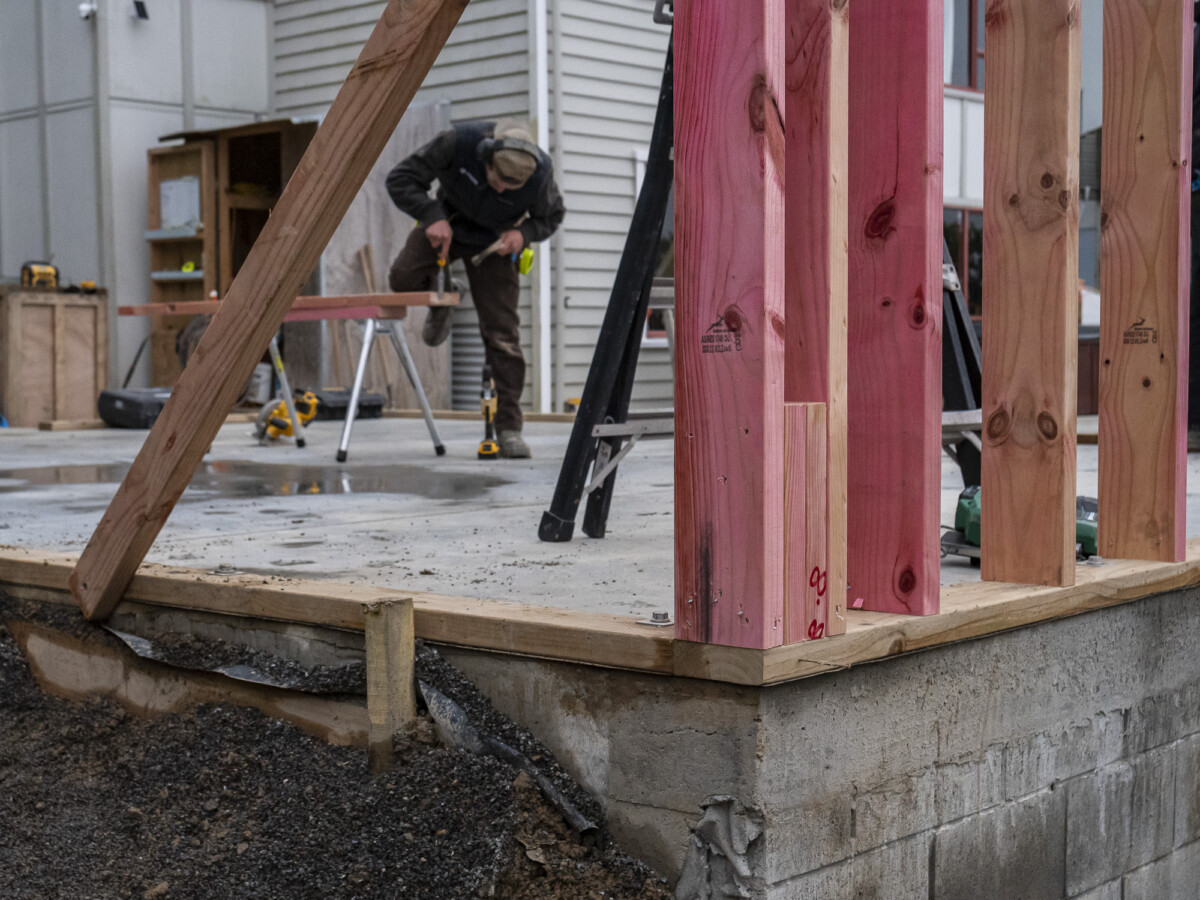Holes in bottom plates
19 Aug 2022, Learn, Prove Your Know How, Technical

Thanks to feedback from readers, BRANZ clarifies some of the issues around holes and penetrations in bottom plates
In Build 186 and Under Construction December 2021/January 2022, the article Important to Keep the Bottom Plate Whole covered the issue of holes and penetrations in bottom plates of timber-framed walls. Feedback from readers to BRANZ suggests that further clarification is required.
Maintaining structural adequacy
The article suggested that the absence of fixing information to concrete slabs in NZS 3604:2011 Timber-framed buildings implied that bottom plate penetrations were not permitted with concrete floor slabs. This is unrealistic, and so this article suggests a way to maintain structural adequacy.
Ideally, a bottom plate would run for the full length of the wall without interruption. Its primary purpose is to anchor the wall to the floor or foundation, and NZS 3604:2011 provides for fixings to a timber and concrete floor for this purpose. However, to accommodate manageable timber lengths and frame sizes, joints are sometimes needed, and the frame detailer will take this into account.
When holes in plate are unavoidable
The article also discussed holes in the plate required for service penetrations such as waste pipes, where lack of planning means decisions must be made on site in a more ad hoc way.
Designers can minimise these situations by locating bracing elements to avoid wet areas and kitchens where possible, or better still, run the pipes in purpose-made ducts or shafts.
Where a plate joint or service penetration becomes unavoidable, it is essential that the plate is fixed to the floor on each side of the joint or penetration to limit sideways movement of the wall.
If the penetration is required in the middle of a bracing element, it is even more important that the cut-out is as short as possible, and that the plate is adequately fixed to the floor.
When the floor is a concrete slab
NZS 3604:2011 clause 8.7.5.2 provides for a 100 × 3.75mm nail each side of the penetration, but is silent on the equivalent for a concrete floor slab.
BRANZ suggests that at least a single 75mm shot-fired fastener on each side of the penetration should be used in this situation. The bottom plate must also be able to still accommodate the full set of required fasteners for the sheet bracing element as well as the end fixings to the slab as required.

Article by Roger Shelton, BRANZ Senior Structural Engineer. This article was first published in Issue 190 of BRANZ Build magazine. www.buildmagazine.org.nz. Figure supplied by BRANZ.
Register to earn LBP Points Sign in
3 Comments
Leave a Reply
You must be logged in to post a comment.



ok
Bottom plate requirements
all good